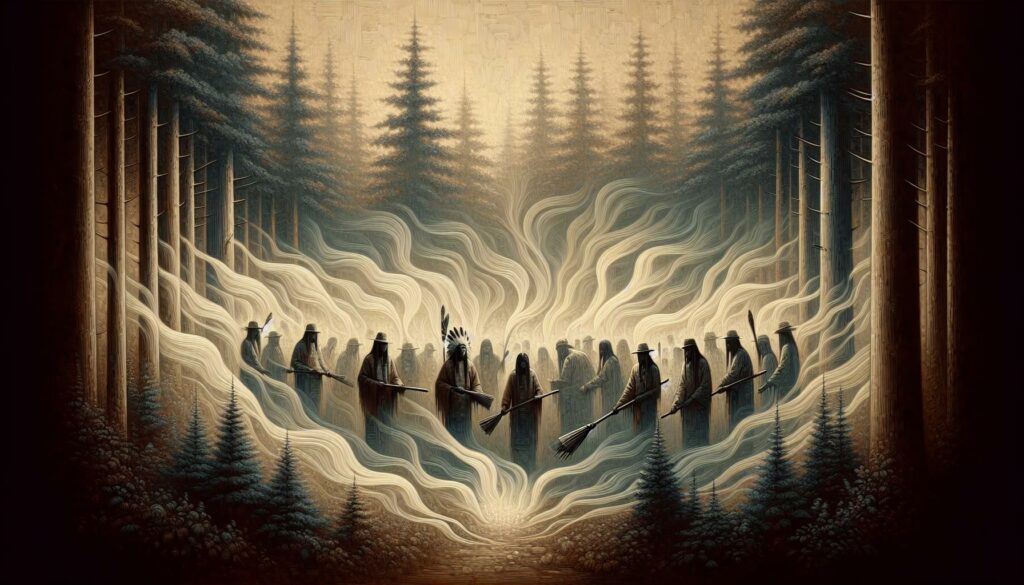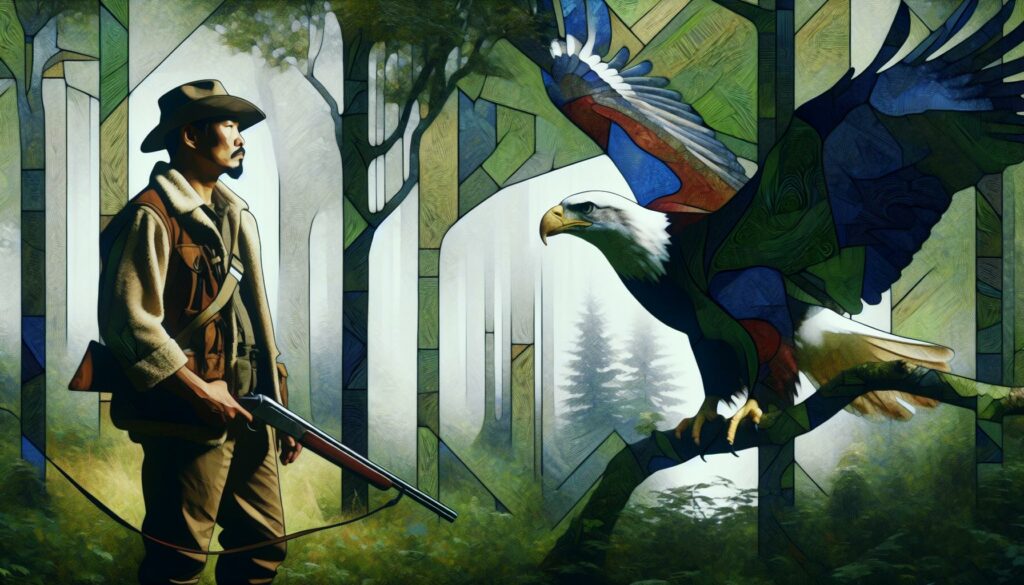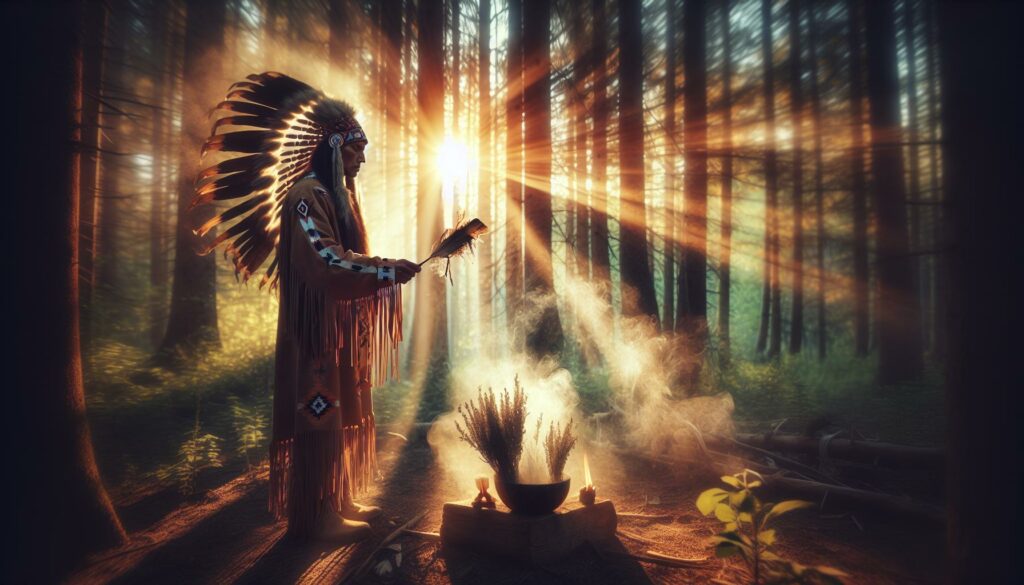Exploring the intricate relationship between taboos and hunting rituals unveils a world where tradition and respect intertwine with survival. I’ve always been fascinated by how ancient practices shape modern hunting methods, ensuring not just success but also honouring the spirit of the hunt.
Delving into these customs reveals the deep-rooted beliefs that govern hunters’ actions, from sacred restrictions to ceremonial rites. Understanding these taboos not only enriches our appreciation of hunting cultures but also highlights the delicate balance between mankind and nature.


Overview of Taboos in Hunting
Taboos in hunting regulate my practices, respect nature, and ensure successful hunts. Different cultures impose various restrictions to honour traditions and maintain ecological balance.
Certain species remain off-limits to me. For example, many Indigenous tribes prohibit hunting eagles due to their sacred status. Similarly, some African communities avoid killing elephants to preserve their symbolic significance.
Seasonal hunting bans protect animals during mating or birthing periods. I adhere to these restrictions to prevent population decline and support sustainable hunting practices. For instance, in Canada, hunting moose is prohibited during winter to safeguard their breeding.


Gender roles influence hunting taboos as well. In some societies, hunting’s reserved exclusively for men, while in others, women participate in specific hunting-related tasks. This division helps maintain cultural structures and responsibilities within the community.
Ceremonial rites accompany my hunting activities. Before a hunt, I might perform prayers or offer gifts to seek blessings. After successfully hunting, rituals express my gratitude and respect for the animal’s life.
Violating hunting taboos can result in social ostracism or spiritual consequences. These prohibitions uphold ethical standards and reinforce my connection with the environment.
Traditional Hunting Rituals

Traditional hunting rituals play a crucial role in many indigenous and hunter-gatherer communities, blending cultural and spiritual elements to guide successful hunts.
Spiritual Practices
I observe that many cultures engage in spiritual practices to honor animals and seek guidance. Native American tribes conduct smudging ceremonies using sage or sweetgrass smoke to purify hunters and their equipment. In Siberia, hunters fast or abstain from certain activities, enhancing their connection with nature and improving hunting success. The Yanomami of the Amazon use hallucinogenic plants to communicate with the spirit world, seeking permission for the hunt. These practices ensure respect for the animals and the environment, reinforcing a harmonious relationship between hunters and nature.
Communal Ceremonies
Communal ceremonies strengthen the social bonds within hunting communities. Before a hunt, groups may gather to perform collective rituals, fostering unity and shared purpose. After a successful hunt, communities hold feasts to celebrate and distribute the catch, emphasizing cooperation and gratitude. These ceremonies often include prayers, songs, and offerings, which express respect for the animals and the spirits guiding the hunt. By participating in these communal activities, hunters uphold traditions and maintain the cultural integrity of their society.
Cultural Significance of Hunting Taboos

Hunting taboos play a crucial role in maintaining cultural heritage and ethical standards within various societies.
Preservation of Traditions
Preserving hunting traditions ensures the continuation of cultural identities. Indigenous communities uphold rituals and restrictions that have been passed down through generations. For instance, the Sami people of Scandinavia follow specific hunting seasons to respect animal populations and maintain ecological balance. These practices reinforce communal bonds and transmit valuable knowledge about wildlife management and environmental stewardship.
Ethical Considerations
Ethical hunting practices are governed by taboos that promote respect for nature. Prohibiting the hunting of certain species, such as the bald eagle in North America, safeguards endangered animals and maintains biodiversity. Additionally, rules against wasting animal parts encourage responsible use of resources. By adhering to these ethical guidelines, hunters demonstrate reverence for life and contribute to sustainable ecosystems.
Modern Interpretations and Adaptations
Contemporary society reinterprets traditional hunting taboos and rituals to align with modern conservation efforts and cultural preservation.
Influence of Contemporary Society
Modern conservation initiatives integrate traditional taboos to enhance wildlife protection. Governments and NGOs collaborate with indigenous communities, recognising the effectiveness of age-old practices in regulating hunting. For instance, in the Amazon, sustainable hunting practices inspired by Loretoyacu River communities help maintain animal populations. Additionally, global awareness of biodiversity loss encourages the adoption of cultural conservation methods, promoting ecological balance. Educational programmes highlight the value of these rituals, ensuring younger generations appreciate and continue sustainable traditions.
Challenges and Changes
Adapting traditional hunting rituals to modern contexts presents several challenges. Urbanisation disrupts indigenous lifestyles, reducing adherence to traditional taboos. Legal restrictions may conflict with customary practices, limiting hunters’ ability to follow ancient guidelines. Climate change alters ecosystems, affecting the availability of species and the timing of rituals. To address these issues, communities modify rituals to fit new environmental realities while striving to maintain their cultural significance. Technological advancements, such as wildlife monitoring systems, complement traditional methods, enhancing sustainable hunting practices. Balancing modernization with cultural preservation remains essential for the continued effectiveness of these adaptations.
The Role of Taboos and Rituals in Wildlife Conservation
Taboos and hunting rituals play a crucial role in wildlife conservation by regulating hunting practices and preserving biodiversity. In many indigenous communities, these cultural norms restrict the hunting of specific species, ensuring their survival. For instance, the Idu Mishmi community in Northeast India enforces taboos that limit wild meat consumption, directly contributing to the protection of endangered tigers and other wildlife.
Rituals accompanying hunting activities reinforce respect for nature and ethical hunting. These ceremonies often involve prayers and offerings, which acknowledge the importance of each animal and promote sustainable hunting practices. In Ghana, traditional rituals have successfully safeguarded various species by embedding conservation principles within cultural traditions.
Moreover, taboos foster social cohesion and interdependence, as violating these norms can result in social ostracism or spiritual repercussions. This collective adherence strengthens community efforts to maintain ecological balance. By integrating these age-old practices into modern conservation strategies, communities demonstrate a harmonious relationship with their environment, ensuring the longevity of both cultural heritage and wildlife populations.
| Community | Conservation Mechanism | Impact |
|---|---|---|
| Idu Mishmi | Taboos restricting wild meat consumption | Protection of endangered tigers |
| Ghanaian Tribes | Traditional hunting rituals | Safeguarding various wildlife species |
Integrating these traditional conservation methods with contemporary efforts enhances the effectiveness of wildlife protection initiatives. Collaboration between local communities and conservation organizations leverages the strengths of both traditional knowledge and modern strategies, fostering a sustainable approach to preserving biodiversity.
Key Takeaways
- Regulation of Hunting Practices: Taboos enforce restrictions on hunting specific species and seasons, ensuring ecological balance and sustainable wildlife populations.
- Cultural Preservation: Traditional hunting rituals and taboos maintain and transmit cultural identities, fostering community bonds and ethical hunting standards.
- Ethical and Spiritual Respect: Ceremonial rites and spiritual practices honour the animals and the environment, promoting a respectful and harmonious relationship between hunters and nature.
- Conservation Efforts: Integrating traditional taboos with modern conservation strategies enhances wildlife protection and biodiversity preservation.
- Adaptation to Modern Challenges: Communities adapt ancient hunting rituals to contemporary contexts, addressing issues like urbanisation and climate change while maintaining cultural significance.
- Community Cohesion and Responsibility: Adherence to hunting taboos strengthens social cohesion and collective responsibility towards environmental stewardship and ethical hunting.
Conclusion
Understanding the intricate dance between taboos and hunting rituals has deepened my appreciation for the cultural and ethical frameworks that shape hunting practices. These traditions not only safeguard wildlife but also reinforce the bond between communities and their natural environments. Witnessing how age-old customs adapt to modern conservation efforts inspires confidence in the resilience of these practices. It’s clear that maintaining this balance is crucial for preserving both cultural heritage and our planet’s biodiversity. Embracing these rituals fosters respect and sustainability, ensuring that hunting remains a meaningful and responsible activity for generations to come.
Frequently Asked Questions
What is the relationship between taboos and hunting rituals?
Taboos and hunting rituals are deeply interconnected, with ancient practices shaping modern hunting methods. These taboos regulate hunting activities, ensuring respect for nature and successful hunts. Rituals often involve prayers and offerings, honouring the animals and expressing gratitude. By adhering to these traditions, hunters maintain a harmonious balance between humanity and the natural world, preserving cultural heritage and ethical standards.
How do hunting taboos contribute to wildlife conservation?
Hunting taboos play a crucial role in wildlife conservation by regulating which species can be hunted and setting hunting seasons. For example, prohibiting the hunting of revered animals like eagles and elephants helps protect these species. Seasonal bans allow animal populations to recover during critical periods. These cultural restrictions promote sustainable hunting practices, ensuring biodiversity is maintained and ecosystems remain balanced.
What are some examples of traditional hunting rituals?
Traditional hunting rituals vary across cultures but often include spiritual and communal elements. Native American smudging ceremonies cleanse and prepare hunters spiritually, while Siberian fasting seeks guidance from nature. Communal ceremonies before hunts strengthen social bonds, and post-hunt feasts celebrate successful hunts. These rituals reinforce respect for animals and nature, fostering a deep connection between hunters and their environment.
How do gender roles influence hunting taboos?
In many societies, gender roles shape hunting taboos by reserving hunting for men while assigning women related tasks like preparing food or processing animal skins. This division of roles maintains cultural traditions and ensures that hunting practices are conducted respectfully. By defining specific roles, communities uphold their ethical standards and preserve the social structure essential for successful and sustainable hunting.
How are modern conservation efforts integrating traditional hunting taboos?
Modern conservation efforts are increasingly collaborating with indigenous communities to integrate traditional hunting taboos into contemporary wildlife protection initiatives. Practices such as sustainable hunting in the Amazon demonstrate the effectiveness of age-old customs in regulating hunting and maintaining animal populations. By combining traditional knowledge with modern technologies like wildlife monitoring systems, these collaborations enhance conservation strategies and promote biodiversity preservation.
What challenges do traditional hunting practices face today?
Traditional hunting practices face challenges from urbanisation, legal restrictions, and climate change, which disrupt traditional lifestyles and necessitate adaptations. Additionally, technological advancements and changing societal values can interfere with the continuation of ancient rituals and taboos. These challenges require communities to balance modernization with cultural preservation, ensuring that hunting traditions remain relevant and effective in promoting sustainable practices.
Why is it important to preserve hunting traditions and taboos?
Preserving hunting traditions and taboos is vital for maintaining cultural heritage, ethical standards, and environmental stewardship. These practices embody deep-rooted beliefs that respect nature and promote sustainable resource use. By upholding these traditions, communities demonstrate reverence for life, contribute to biodiversity conservation, and reinforce their cultural identity. Preservation efforts ensure that the wisdom of generations continues to guide responsible hunting and protect ecosystems.
How do hunting taboos vary across different cultures?
Hunting taboos vary widely across cultures, reflecting diverse beliefs and environmental contexts. Some societies prohibit hunting specific revered species, like eagles or elephants, while others enforce seasonal bans to protect wildlife during critical periods. Gender roles and ceremonial rites also differ, with certain cultures reserving hunting for men and incorporating unique spiritual practices. These variations highlight the rich diversity of hunting traditions and their tailored approaches to conservation and ethical hunting.
Can violating hunting taboos have consequences?
Violating hunting taboos can lead to significant social and spiritual repercussions. In many communities, breaking these taboos results in social ostracism, loss of status, or spiritual consequences believed to bring bad luck or misfortune. These consequences reinforce ethical hunting standards and ensure that hunters adhere to cultural norms, maintaining the integrity of hunting practices and the community’s respect for nature.
How do hunting rituals enhance community cohesion?
Hunting rituals enhance community cohesion by fostering cooperation, shared values, and collective identity. Communal ceremonies before hunts build teamwork, while post-hunt feasts celebrate success together, strengthening social bonds. These rituals promote gratitude and mutual support, ensuring that hunting practices are conducted respectfully and ethically. By participating in these shared traditions, community members reinforce their interconnectedness and commitment to sustaining their cultural heritage.
Author

Josh Morley holds a Bachelor’s degree in Theology from the Trinity School of Theology and a Diploma in Theology from the Bible College of Wales. His academic journey involved interfaith community projects and supporting international students, experiences that shaped his leadership and reflective skills. Now based in Liverpool, Josh is also the founder of Marketing the Change, a digital agency specializing in web design and marketing.
View all posts





